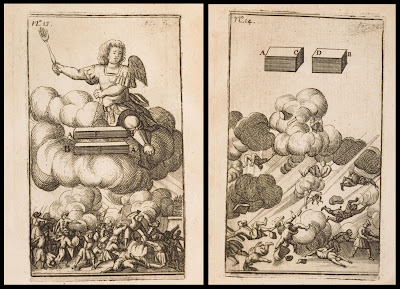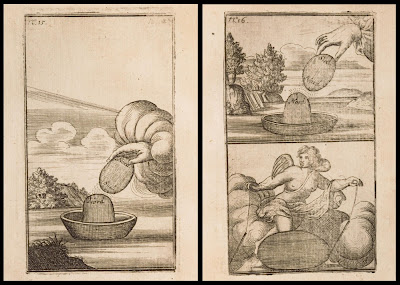"We may see how far from unproductive magnetick philosophy is, how agreeable, how helpful, how divine! Sailors when tossed about on the waves with continuous cloudy weather, and unable by means of the celestial luminaries to learn anything about the place or the region in which they are, with a very slight effort and with a small instrument are comforted, and learn the latitude of the place." [William Gilbert, 1600, 'De Magnete']


















[click for much enlarged versions]
Fumbling around in the 17th century for the rational means by which to comprehend and describe such a mysterious force as magnetism must have been a very difficult intellectual enterprise (and still is, for many of us).
The abstraction of these emerging scientific developments into a visual format to accompany and highlight the practical explanations presented its own challenges. When you only have a limited understanding of the nature of the science and a very modest visual vocabulary in historical terms with which to express these ideas, it seems quite appropriate I suppose, with the benefit of hindsight, to see that the early illustration work in this area was a mixture of old and new representations.
The illustrations above come from a 1690 book by Joachim d'Alencé (Dalencé) called 'Magnetologia Curiosa', from the Max Planck Institute's European Cultural Heritage Online. It is not a particularly outstanding work in science history nor even in technical virtuosity of illustration. But I think it's interesting nevertheless in the way it employs allegorical motifs (hands from clouds; cupids) for instance, to underline the notion that there are great forces at work. [The original book was published in 1687 under the title 'Traitté de l'aiman'] The book is divided into 2 sections: a short outline of magnetism and experiments performed and the back section containing about 30 illustrations - I think I've posted all of them above, but larger versions in full page format are available at the ECHO site.
The seminal text on magnetism from the early modern period was 'De Magnete' by William Gilbert (1600) in which, among other things, he described the geomagnetic basis for the operation of a compass and coined the latin derivative for the word electricity. It was not only the first work on experimental physics but is also widely regarded as the beginning of modern science. It had a profound influence on Galileo, Kepler and Newton.
- Joachim d'Alencé: short biography, bookshop reference, his other notable book on thermometers.
- William Gilbert: 'Forgotten Genius'; multiple biographies; 'The Great Magnet: The Earth'; 'De Magnete' (but I found it very slow loading)
- History of Magnetism and Electricity.
- Previously: Otto Von Guericke; Giovanni Aldini.
Tidak ada komentar:
Posting Komentar